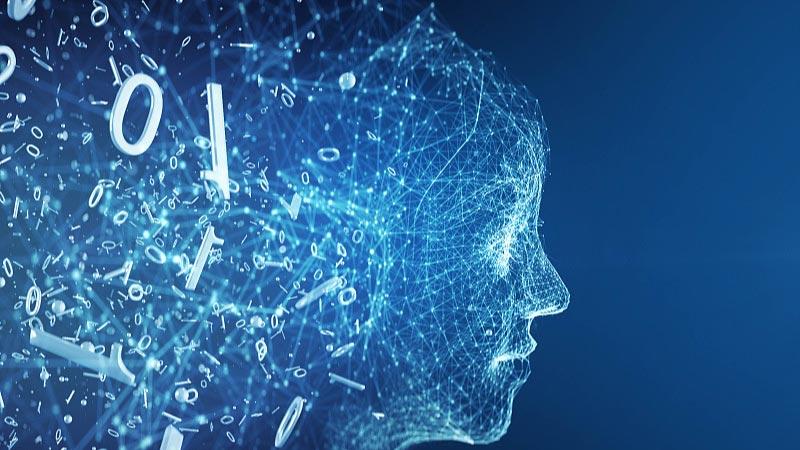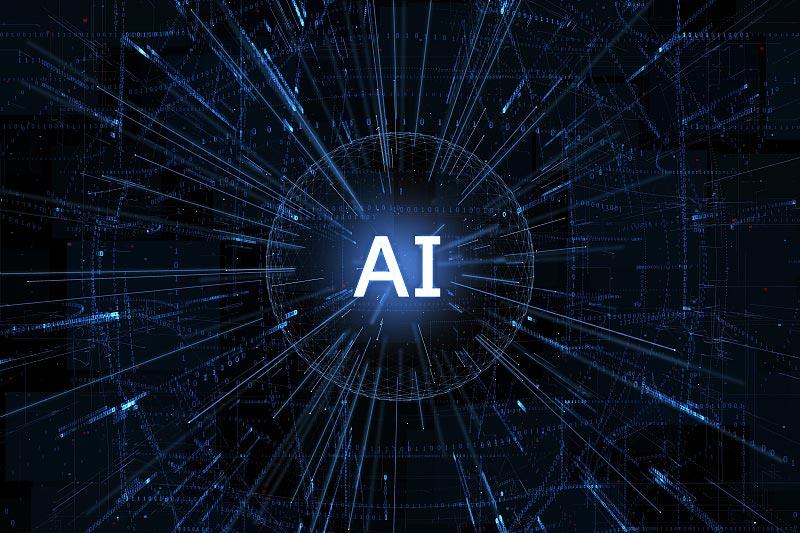Opportunities and risks in the era of AI
Editor’s note: Liu Wei, a special commentator on current affairs for CGTN, is director of the Human-Computer Interaction and Cognitive Engineering Laboratory at Beijing University of Posts and Telecommunications. The article reflects the author’s opinions and not necessarily those of CGTN.
The rapid evolution of artificial intelligence-generated content (AIGC) is perhaps one of the hottest topics discussed at this year’s Boao Forum for Asia annual meeting. In the past year or two, breakthroughs in AIGC applications and the emergence of Sora have indeed shocked the world. Artificial intelligence (AI) technology has shown the potential to break through traditional capability bottlenecks in scientific research and brings new possibilities to various fields. However, at the same time, the explosion of AI technology has also triggered a series of concerns, such as the difficulty of identifying false information and jobs at risk of being taken by AI. Based on the current trajectory of AI, we can predict some breaktroughs that will occur in this field:
In the field of AI in the future, the development of human-machine environment system intelligence may become an important breakthrough direction. Human-machine environment system intelligence refers to an intelligent system that integrates humans, machines and the environment. It will combine AI, Internet of things, smart sensors and other technologies to achieve intelligent perception, understanding and response to the environment and users. It will also bring new application scenarios and business opportunities to smart cities, smart homes, smart transportation and other fields. It also needs to overcome challenges in data privacy, security and other aspects.
Intelligent systems will be more capable of autonomous learning, transfer learning, and multi-modal learning. Autonomous learning refers to the ability of machine learning systems to automatically learn features and patterns from unlabeled data. That is, AI systems can extract knowledge from massive unlabeled data and perform self-improvement and optimization, thereby reducing reliance on labeled data.
This will make AI systems more universal and adaptable, able to better adapt to new tasks and environments. Transfer learning refers to the ability to transfer knowledge learned on one task to another related task. You can use the knowledge and experience you have learned to acceleratethe learning of new tasks and improve performance.
This ability makes AI systems more efficient and flexible, and more adaptable to the needs of different fields and tasks. At the same time, AI systems will pay more attention to the learning, processing and understanding of multi-modal data, and conduct joint learning among multiple modalities such as vision, language, and sound to achieve more intelligent interaction and decision-making. In addition, in order to ensure the security of the system, AI technology will pay more attention to the transparency and processing of algorithms, improve users’ understanding and trust in the AI decision-making process, and reduce risks caused by uncertainty.
CFP
Opportunities and risks coexist in the era of AI. China and Asia at large can actively respond to challenges, strengthen cooperation and innovation, enable AI technology to empower social transformation and modernization development, and effectively manage and control possible risks to achieve scientific and technological development and social development. Development of positive interactions like the following methods can be used:
First, strengthen technological innovation and talent cultivation.
Invest more resources in cultivating talent in the field of AI and promote technological innovation to meet future challenges. Increase investment in education and training resources in the field of AI, including setting up more relevant professional courses, providing practical opportunities and internship projects, and cultivating students’ AI skills and knowledge. Support scientific research institutions and universities to conduct research in the field of AI, encourage the exploration and innovation of cutting-edge technologies, and cultivate the leadership and development capabilities of talents in scientific and technological innovation.
Second, establish a sound regulatory system.
Formulate relevant laws and regulations to clarify the application scope, ethical standards and responsibility distribution of AI technology to protect public interests and individual rights and interests. Strengthen the protection of personal data, standardize data collection, storage and use behavior, and ensure that data privacy is not violated. AI systems are required to have a certain degree of transparency and comprehension, allowing users and regulators to understand how the system makes decisions and be able to explain its behavior. Emphasize the security and risk management of AI systems to prevent potential security threats and risks and ensure stable operation of the system. Advocate for AI practitioners to abide by ethical standards, assume social responsibilities, and avoid the misuse or negative impact of AI technology.
Third, promote the integration of industry, academia and research.
Strengthen cooperation among industry, academia and government departments to promote the practical application and industrialization of AI technology. Establish a production-learning-research cooperation platform to promote exchanges and cooperation among all walks of life and jointly explore application scenarios and solutions for AI technology.
Government departments can set up funding projects to encourage academic institutions and industry to jointly carry out research and development of AI technology and promote the transformation of scientific research results into practical applications. Promote talent training and exchanges between industry and academia, build talent training channels and mechanisms, and cultivate talents that meet industry needs. Government departments can introduce policies to support the development of the AI industry, provide technical support and financial support to enterprises, and promote the practical application and industrialization of AI technology. Strengthen information sharing and resource integration, promote cooperation among industry, academia and government departments, and promote the application of AI technology in various industries.
Fourth, strengthen international cooperation.
International cooperation projects can promote technical exchanges and cooperation between different countries and regions and jointly overcome key technical problems in the field of AI. Organize international academic exchanges and seminars to promote academic exchanges between different countries and regions and share the latest research results and technological progress. Promote international data sharing and cooperative research, build a data sharing platform, and promote transnational cooperation and innovation in AI technology. Through the cooperation of international organizations or institutions, unified AI technology standards and cooperation specifications can be formulated to ensure the safety and sustainable development of AI technology. Governments can strengthen communication and sign AI technology cooperation agreements to jointly respond to the challenges of the AI era and promote technological development and cooperation.
In short, by actively responding to challenges and strengthening cooperation and innovation, China and Asia at large can make full use of the opportunities brought by AI technology, while effectively managing and controlling possible risks, and promoting the integration of scientific and social development.
(If you want to contribute and have specific expertise, please contact us at opinions@cgtn.com. Follow @thouse_opinions on Twitter to discover the latest commentaries in the CGTN Opinion Section.)
Liu Wei








